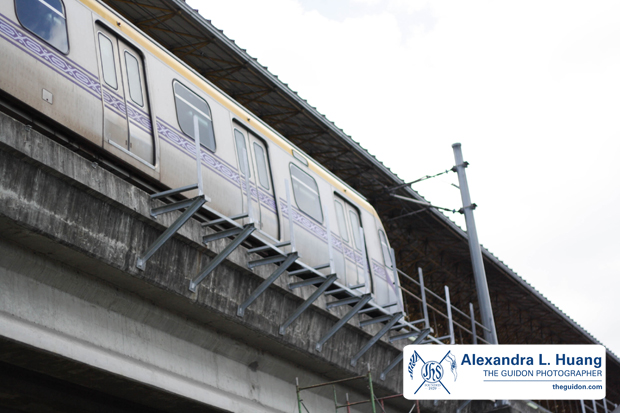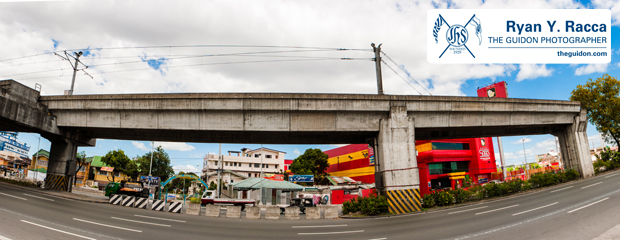
MORE COMMUTER-FRIENDLY. The LRT-Line 2 and MRT 3 will soon see improvements that seek to make traveling more convenient for thousands of Filipino commuters. Photo by Alexandra L. Huang.
THE NATIONAL Economic and Development Authority (NEDA) board formally announced the approval of P25 billion worth of infrastructure projects last September 4. This includes the east extension of the Light Rail Transit Line 2 (LRT-Line 2), addition of 52 coaches to the Metro Rail Transit Line 3 (MRT 3) and new airports in Albay and Bohol.
Former Transportation and Communications Secretary Manuel Roxas II, who now heads the Department of Interior and Local Government, presented the projects to NEDA board chair Benigno Aquino III, who is also president of the Philippines. The president’s approval opened the government projects for public bidding under the Public-Private Partnership (PPP) Program.
Towards commuters’ welfare
The P9.6 billion LRT-Line 2 East Extension Project will ease travel from Rizal to other parts of the National Capital Region through the addition of a 4.19 kilometer route and the establishment of two terminals at Emerald Drive in Cainta and Masinag Junction in Antipolo City.
Currently, the LRT-Line 2 only extends from Claro M. Recto Avenue in Manila to Santolan in Pasig City.
The P8.6 billion MRT expansion project will increase the transit system’s capacity through the addition of 52 new coaches, addressing its overcapacity issue.
According to government data, the EDSA-bound train presently serves a daily average of 500,000 commuters, exceeding its 350,000 capacity.
The two projects are set to be implemented from 2012 to 2016 and 2012 to 2019, respectively.
Recent news reports have said that the government is planning to raise LRT and MRT fares by 2013, since costs have been government-subsidized since 2002. However, in an article published last October 25 on ABS-CBN News Online, Senator Sergio Osmeña III said that “there has to be a Senate public hearing first before the government increases MRT and LRT fares.”
As of press time, there has not been a final announcement regarding the proposed hike, which will take effect in the following year.
Domestic travel improvements
With an estimated cost of P7.5 billion, the building of the Bicol International Airport in Daraga, Albay will replace the present Legazpi Airport, which has safety and capacity issues.
The airport project was initially aimed at improving the Legazpi Airport, but the planners resorted to finding a new location because of a mountain that blocked airplanes during approach, said Presidential Communications Development and Strategic Planning Secretary Ramon Carandang in a press release published on the president’s official website last September 4.
A study by the Department of Transportation and Communications concluded that it would be cheaper to relocate the airport than to level the mountain.
On the other hand, the new airport in Panglao, Bohol, estimated to cost P7.4 billion, will replace the old Tagbilaran Airport. The new airport is expected to further aid the development of the tourism industry in the Visayas region, the same press release said.
The projects’ significance
For economics instructor Marilou Perez, the projects reflect the increasing needs of the Philippines as it strives for economic improvement.
“We have to go with the development of the country,” Perez said.
Perez stated that before approving proposals, NEDA conducts a cost-benefit analysis. Thus, the approval of the mentioned projects means that for the government agency, the benefits outweigh the costs.
She also said that the projects are in line with NEDA’s thrusts, especially with the improvement of airport facilities, as these directly affect the tourism sector.
Communications and technology management sophomore Yana Angeles, a weekly commuter, expressed optimism, especially with the addition of new coaches in the MRT.
Angeles shared her experience, saying, “Madalas, sobrang tagal dumating no’ng coaches. Minsan, punung puno na ‘yong platform pero wala pa ring dumarating. (It usually takes a long time for the coaches to arrive. Sometimes, the platform would already be packed with people but no train would be arriving yet.)”
Improvements entailed
Marie Danielle Guillen, project manager of the New Mobility in Cities Project from the Ateneo School of Government, said in an email interview with The GUIDON that, “We have a challenging public transportation system that will entail a paradigm shift on looking at people’s mobility.”
Guillen commented that “we are very rich on available transportation modes, but lacking on particular investment on public transport and non-motorized transport infrastructure and services that makes mobility convenient, efficient and safe for all.”
“The public transport infrastructure, modes and services should be truly inclusive [and] responding to the needs of the poor and the vulnerable groups, such as children, women, elderly and persons with disabilities,” Guillen said.
Other unaddressed concerns
Last August 30, 52-year-old Lucy Aroma committed suicide by jumping into the tracks while the train was arriving at the LRT-Line 1 EDSA terminal. The incident limited the operations of the train, leaving many passengers stranded and compelled them to take other means of transportation.
For Perez, the incident was an isolated case, although Guillen saw it as a wake-up call for the Light Rail Transit Authority (LRTA) to address security and other related concerns.
“I understand that LRT and MRT management is trying its best to ensure security. However, there’s always some room for further improvement,” Guillen said.
“There should be seamless connection between the two [LRT and MRT], [such as] a single ticketing system [and an] innovative discounts ticket aside from the current stored value.” She added that security services must also be improved through the use of new technologies.
As for the airports in the country, Guillen believes that “there is a need to decongest Ninoy Aquino International Airport and if I am not mistaken the government is looking at it at the moment.”
Guillen said that these developments are commendable, but noted that the land, sea and air transportation in the country means still need to be “seamlessly integrated together.”




